September 2020: what went on before
Mels Dees: Graphic art – or not
After making etchings and etched paper reliefs for several decades, I stopped doing it, rather abruptly, about 25 years ago. The main reason was my health – at that time, solvent-free etching chemicals were hard to get and their results were far below par. Also, public interest in traditional graphic art had been dwindling for years.

In fact, it was just in time, as around 1995 the first affordable computers able to handle visual data appeared on the market. Affordable to me and other artists, that is. I jumped upon the new technology and began to manipulate photographic material and make computer-aided and 3d-designs. Within a few years this, together with spatial and outdoor installations, constituted a major part of my artistic output.
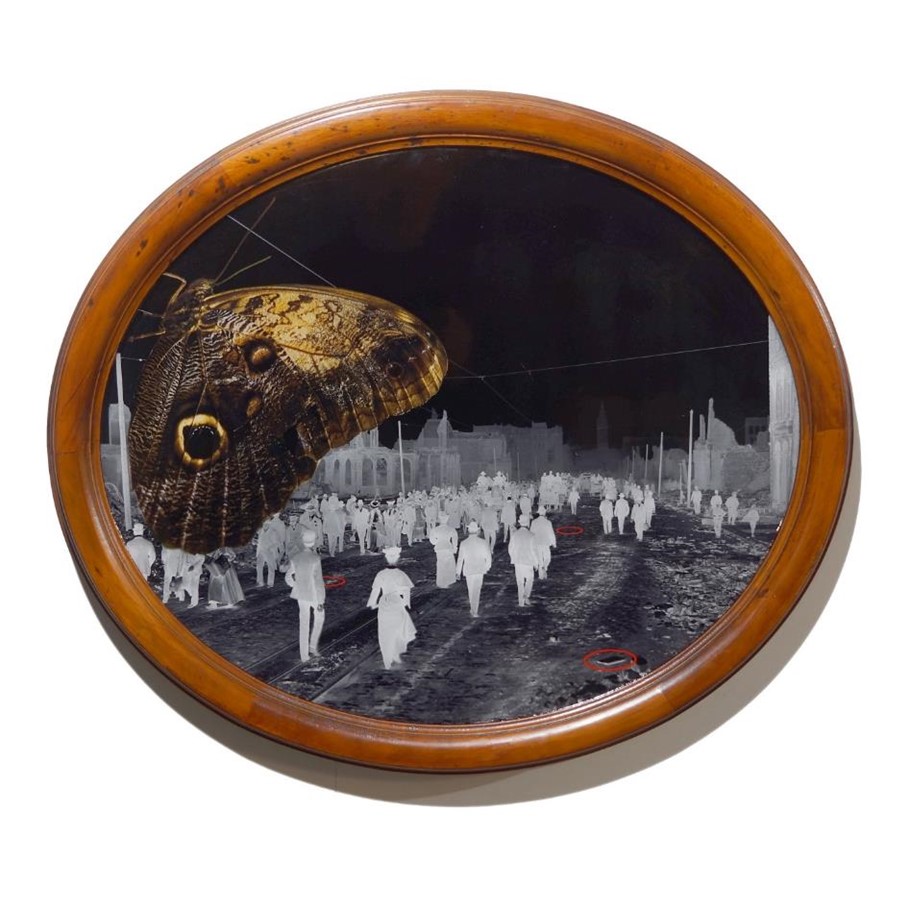
Although pictures I have taken myself are often the source material for my work, I hardly consider myself to be a photographer – in fact, I do not care where the images come from. Sometimes I use found footage, even negatives found in the garbage or in the street. Sometimes there are details I laboriously collected on the internet: not so much objets trouvés as objets cherchés.
I want the elements to combine into a convincing statement, in the way a fiction writer takes fragments of the world around him to create a story. These elements may also include texts, drawings and even musical scores. The final work is created on the computer screen, but I want it to exist off-line as well.
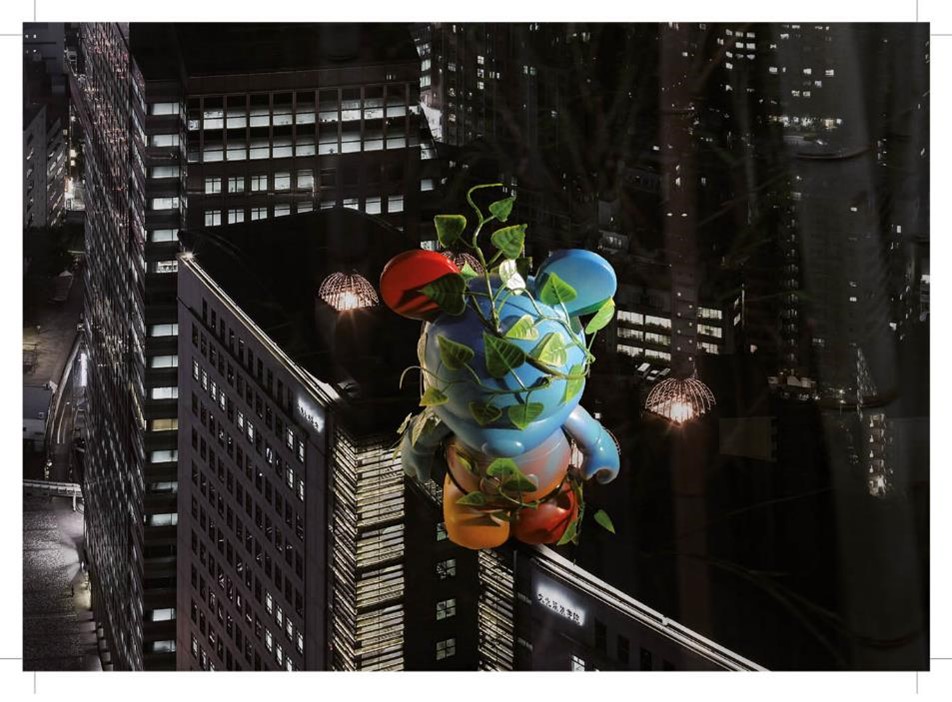
To create a physical print, you need a large format printer of which you have full control: the printing speed , print format, ink types etc. No commercial printing office will allow you to fiddle with its machine, so for years I used the large format printer/plotter at Grafisch Atelier Hilversum, the Netherlands. After it died a peaceful death a few years ago, I got hold of a similar machine and managed to transport the beast to my studio on the first floor, where it has been doing the good work ever since.
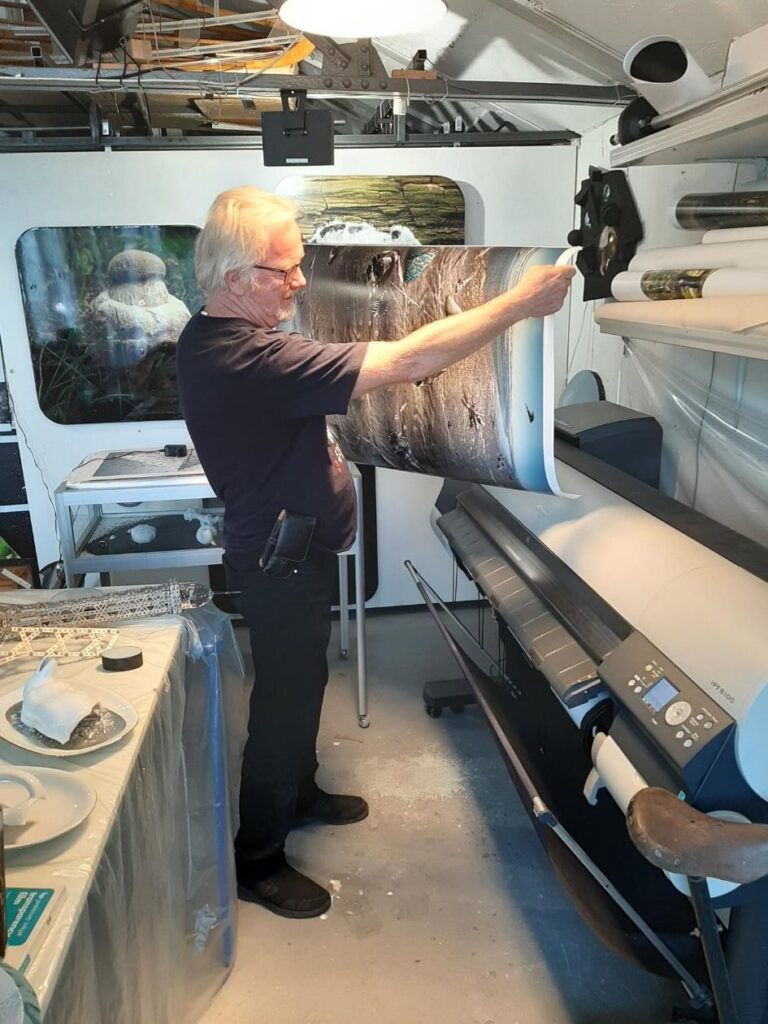
This year, the five artists working at the studio complex of Ateliers Patagonia decided to publish a graphic art edition, a folder containing prints by Mariëlle van den Bergh, Mels Dees, Paul Legeland, Guus Smeulders and Rogier Walrecht. They range from delicate Toyobo prints to etchings and lino prints.
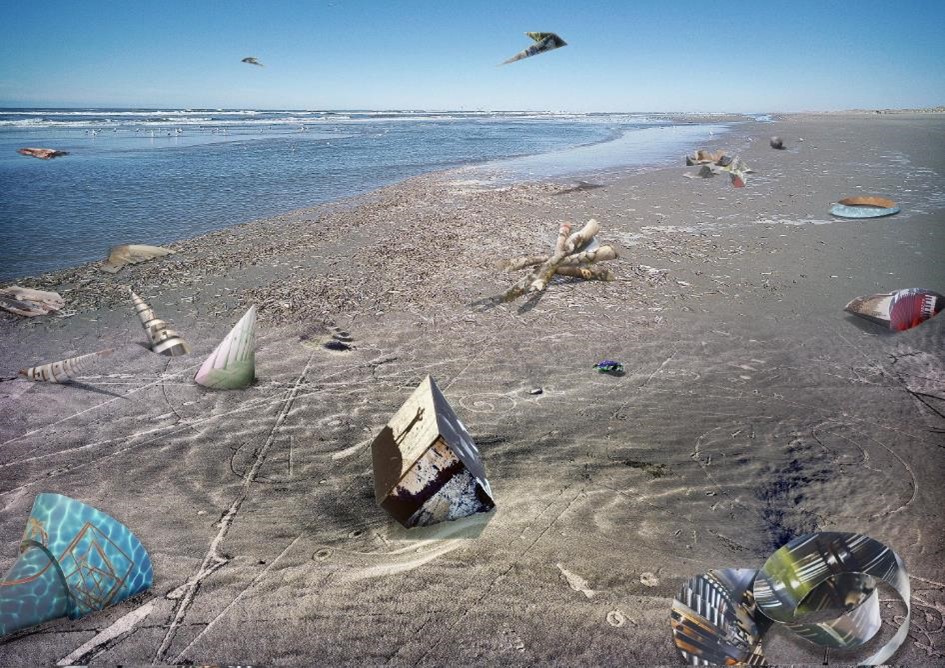
My contribution to PATAMAP 2020, Beachcombing, is a photocollage that more or less had its origin in the Covid-19 pandemic. Because of the rising number of infections in our home area, my partner Mariëlle and I decided to stay on the ‘Quarantine Island’ of Terschelling for six weeks longer than originally planned. Using a drone, I photographed the background material for my print.
As a result of my lingering distrust in depictions of reality, I always have had the urge to fold 2-dimensional images into 3d reliefs and objects. In that way I created shells and other natural shapes out of technical drawings and geometrical photographs – and the other way around. In apocalyptic phantasies that were aroused by the pandemic, I saw how these shapes were washed ashore on the island.
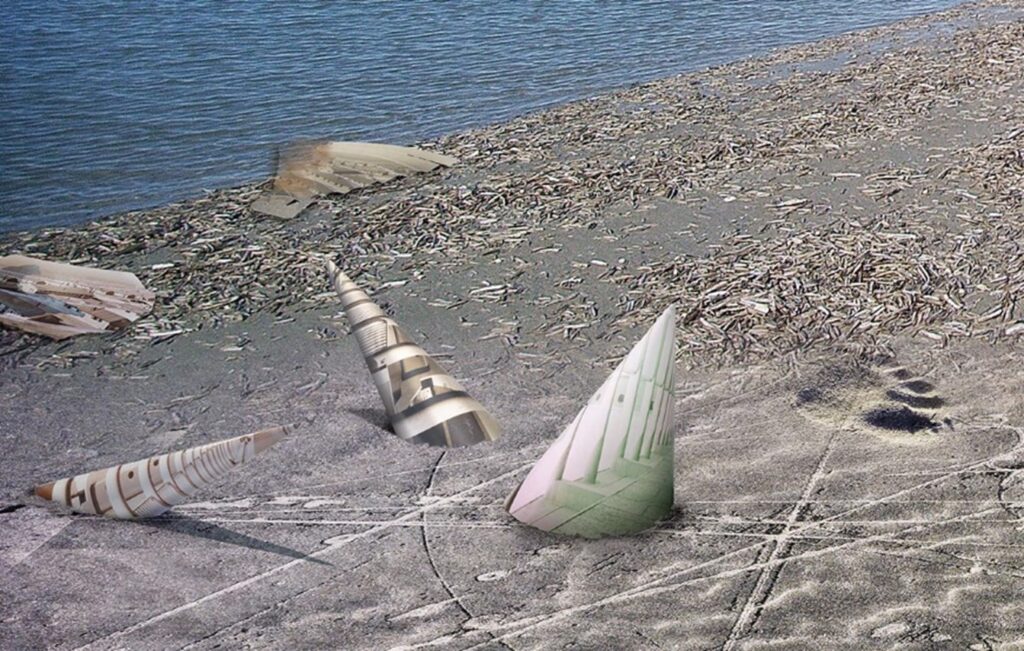
To me, it is unimportant if photography is included in the graphic arts or not. It is one of the few techniques which is suitable to take itself as a subject. Including a photographic picture (of a picture, of a picture etc) in a photograph seems natural. In that way I could turn Beachcombing into a melancholy reflection on my own art, and that is what I was aiming for.
Trond Einar Solberg Indsetviken schreef:
Thank you very much for your blog article and your stay as our first Residency artists. It was a great time.
Thank you for all the good advices that we will take in consideration.
Until we meet again, all the best from Robert and TrondE in Natthagen
oktober 19, 2020 — 12:51 pm